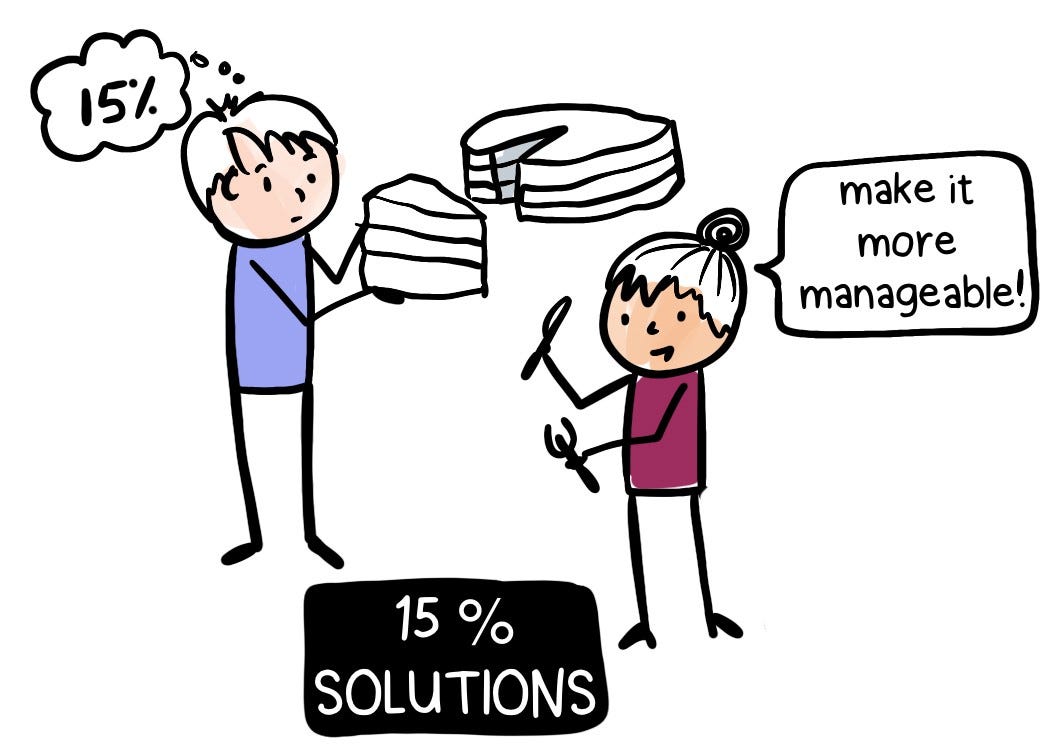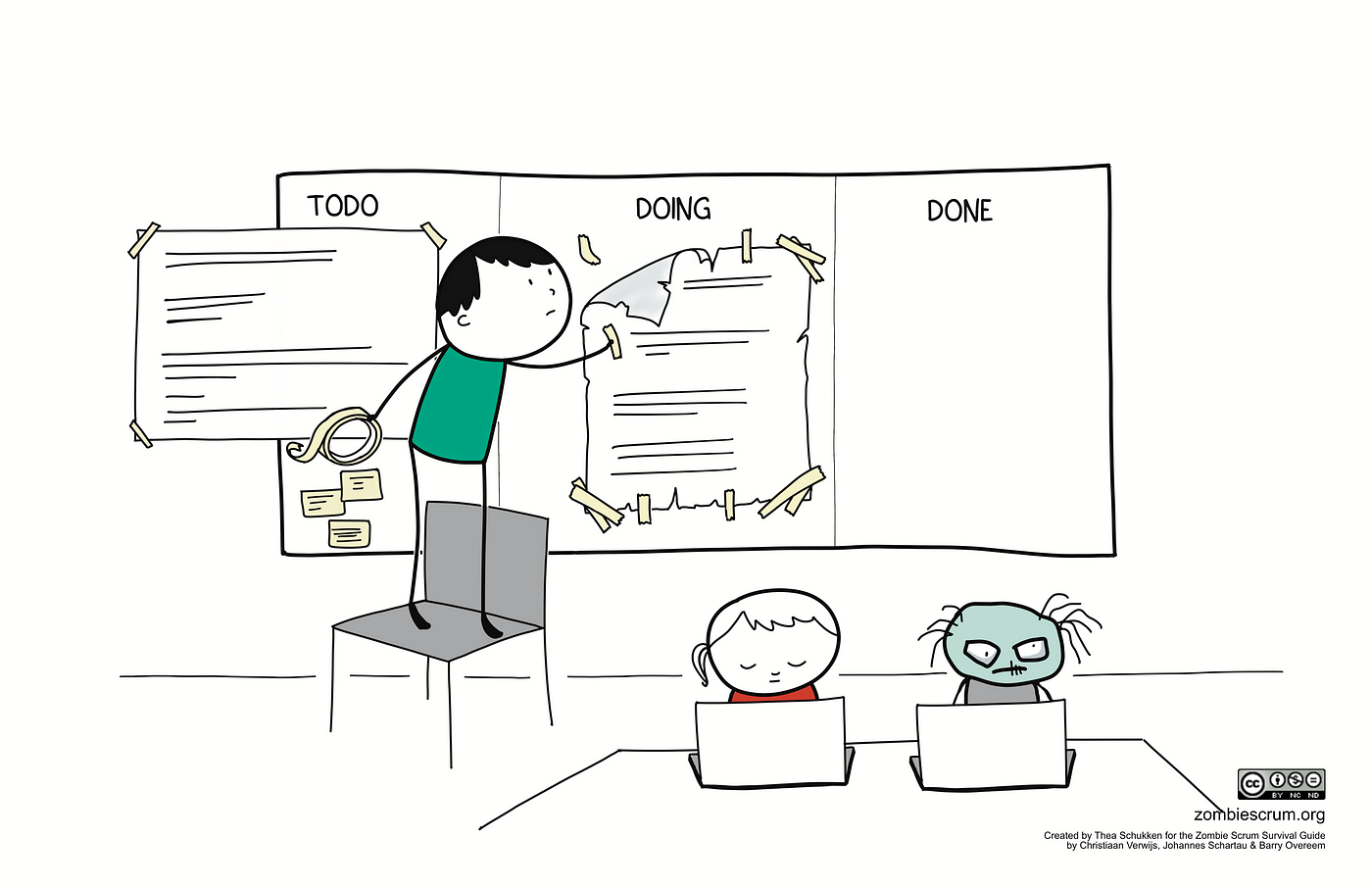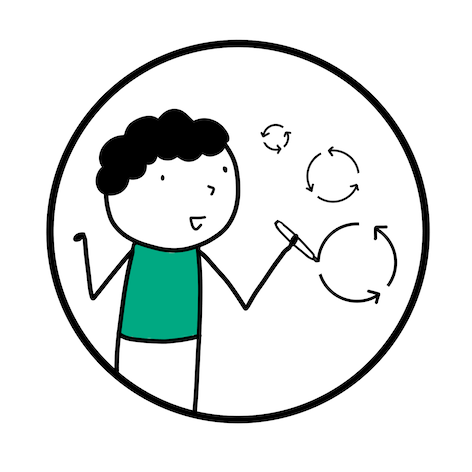
One of the themes Scrum teams can measure with our Scrum Team Survey is refinement. We define ‘refinement’ as the process of breaking down larger items on the Product Backlog into smaller ones with the purpose of ending with items that can comfortably be delivered to stakeholders in a Sprint. Research shows that teams that spend more time on refinement are also more likely to release frequently. In turn, they have more satisfied stakeholders and higher team morale.
Recently, we hosted a workshop and its purpose was to use all our personal experiences and creativity, to identify quick tips around refinement. It resulted in many great ideas, insights, and actionable quick tips. In this blog post, we share the ones that help Scrum teams improve refinement and as such prevent or fix Zombie Scrum.
“We define ‘refinement’ as the process of breaking down larger items on the Product Backlog into smaller ones with the purpose of ending with items that can comfortably be delivered to stakeholders in a Sprint.”
What are quick tips?
You can compare quick tips with 15% Solutions. This is a Liberating Structure intended to trigger big change by starting small. A 15% Solution is any first step that you can take without approval or resources from others and that is entirely within your discretion to act. It is something that you can start right now if you want to. It might not be the ultimate solution, but it’s definitely a good first step in the right direction.
Within the Scrum Team Survey, we call these 15% Solutions “Quick Tips”. The purpose of quick tips is to spark small and incremental change in your Scrum team. Small steps in the right direction to remove impediments, improve collaboration, manage risk, and deliver value sooner. A good quick tip is short & concise, actionable & specific, bold & courageous, easy to use & try.

You can compare quick tips with the Liberating Structure ‘15% Solutions’. A good quick tip is short & concise, actionable & specific, bold & courageous, and easy to use & try.
What we mean by refinement
Although refinement is an essential part of the Scrum framework, it’s not an event like the others. Rather, it’s an ongoing activity. And while this may seem to be a play of words, it does capture an important difference. In our paper about the Scrum framework, we describe that it all starts with understanding the many forms of Product Backlog refinement:
- Clarifying items on the Product Backlog that are too unclear to start work on. This is preferably done directly with the people you’re building the items for (the stakeholders);
- Breaking down work on the Product Backlog that is too big to complete in a single Sprint (which generally also means that they’re too unclear);
- Re-ordering work on the Product Backlog as needed to make the upcoming Sprints as smooth and valuable as possible;
- Adding or removing items from the Product Backlog as new insights emerge;
- Estimating the effort involved in implementing particular items. This does not have to be as ‘formal’ as assigning story points (an optional practice in Scrum), T-shirt sizes, or whatever sizing technique you use. A gut feeling (“Yeah, we know well enough what needs to be done and it feels doable in a Sprint”) is fine too;

One form of Product Backlog refinement is breaking down work on the Product Backlog that is too big to complete in a single Sprint (which generally also means that they’re too unclear);
In a sense, items on a Product Backlog are reminders of “conversations that we will need to have in the future”. And refinement is the ongoing process of having those conversations. Sometimes this means talking with stakeholders about an item that may end up in the next Sprint, while at other times it can be to clarify an item that the team is already working on. Some of these conversations are with the entire Scrum Team and others with smaller groups. Some refinements can even be done individually.
So rather than understanding Product Backlog refinement as a formalized meeting that happens once during the Sprint, attended by everyone in the team, it should be a series of ongoing activities to refine the work on the Product Backlog for the upcoming Sprints. It’s an ongoing activity that happens in many different forms attended by different configurations of people. And it’s entirely up to the Scrum team to determine the best way to do this.
“Items on a Product Backlog are reminders of conversations that we will need to have in the future. And refinement is the ongoing process of having those conversations.”
How does refinement prevent Zombie Scrum?
Organizations that suffer from Zombie Scrum struggle to ship fast. Although they work in the rhythm of Sprints, new features are delivered to customers only occasionally (e.g. as part of a yearly release cycle), without a desire to increase the pace. Excuses for not shipping fast are usually that the product is too complex, technology doesn’t support it, or customers aren’t asking for it. They view shipping fast as a “nice to have” but fail to see that they are missing the benefits of obtaining frequent feedback on the quality of their work. The result is a vicious cycle: the zombified use of Scrum raises barriers to shipping faster, and not shipping faster amplifies the Zombie Scrum symptoms.
One of the most persistent reasons why teams struggle to release is that their Product Backlog items are too big to finish in one Sprint. The larger items are, the more risk and uncertainty they hide. When teams work on two, three, or four huge items during a Sprint, every setback or delay can result in the inability to deliver an Increment at all. So one of the most important skills for Scrum teams is to learn how to break down larger items into smaller ones. Smaller items increase the flow of work through a team, improve predictability, and give more flexibility to decide where to add or drop items in order to achieve the Sprint Goal. This is exactly what the ongoing activity of refinement in the Scrum framework is all about. And how it can help you prevent or fix Zombie Scrum when applied as intended.

Smaller items increase the flow of work through a team, improve predictability, and give more flexibility to decide where to add or drop items in order to achieve the Sprint Goal.
Quick tips to improve refinement
So, now that you know what refinement means and how it can strengthen your Scrum team, what are quick tips to start improving? This is where you can benefit from the experience, knowledge, and ideas of our community. Together we identified the following 8quick tips. Give them a try and let us know the results!
- Quick tip #1: Vote which item on your Product Backlog is the least clear. In the next Sprint, clarify 3 of these items together with the Product Owner. Or remove them.
- Quick tip #2: Invite at least 1 stakeholder for your next backlog refinement session and work together to clarify the top Product Backlog items.
- Quick tip #3: Pick the largest 2 items in your next Sprint and break them down into at least 6 smaller items.
- Quick tip #4: Invite at least 3 stakeholders and together identify the items from your Product Backlog you seem to be able to do without.
- Quick tip #5: Bring the bottom 10 items from your Product Backlog to the Sprint Review and suggest dropping them. If nobody has a strong, compelling reason to keep the items, remove them.
- Quick tip #6: Split the team into pairs during the next refinement session. Each pair selects one item and takes 30 minutes to refine it. Afterward, share the results and define the next steps together.
- Quick tip #7:Pick 1 item from your Product Backlog and take 10 minutes to refine it after the next Daily Scrum. Work together to break the item down on workflow steps.
- Quick tip #8: Make a work agreement that for the upcoming refinement sessions everyone receives the to-be-refined items in advance. Individually, everyone prepares one idea to refine the item(s) and they share this during the refinement session itself.
Closing
In this blog post, we shared 8 quick tips to help your Scrum team improve refinement. We explained the purpose of refinement and how it can prevent or fix Zombie Scrum. These quick tips might not be the ultimate solution, but they will help you spark small and incremental change in your Scrum team. If refinement is something you want to improve with your team, consider trying one of our quick tips. We’re also eager to learn from your experiences, so if you have other ideas: feel free to share them. Let’s learn and grow, together!
All quick tips are included in the Scrum Team Survey. With this free product, Scrum teams can diagnose themselves with an extensive, scientifically validated survey and receive detailed results and evidence-based feedback upon completion. Give it a try, and receive quick tips for each of the 30 topics the survey contains!
